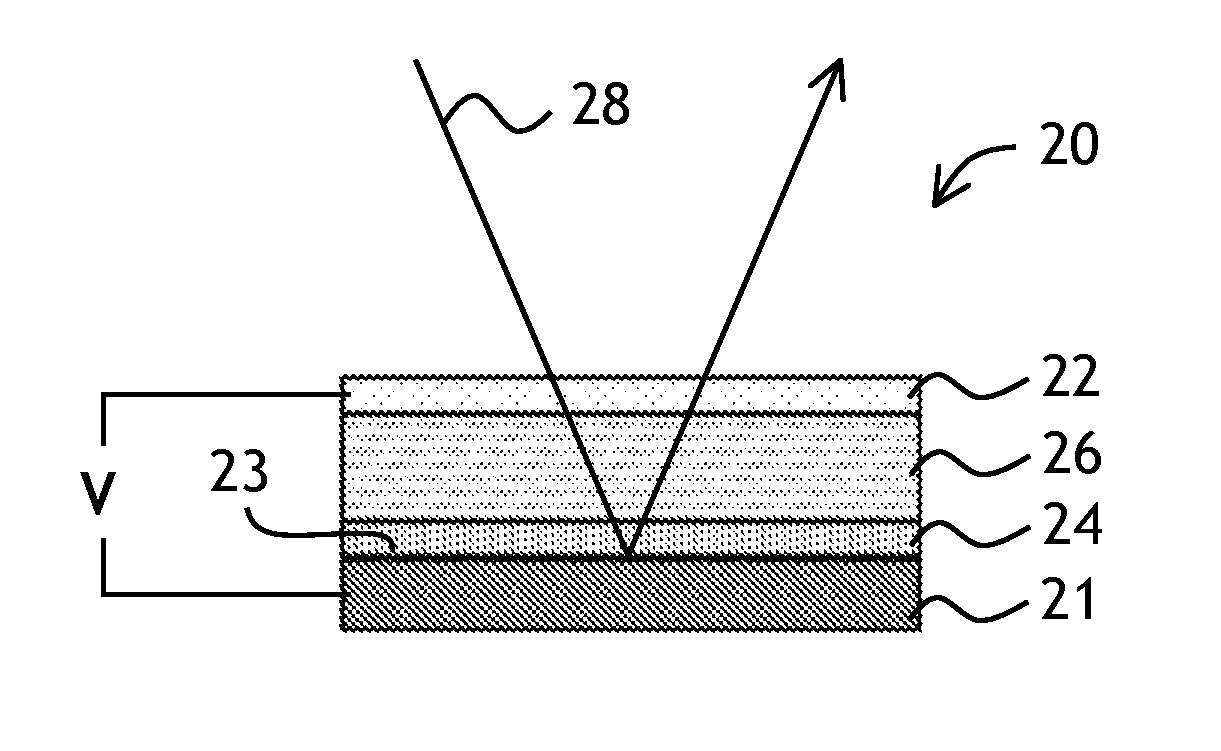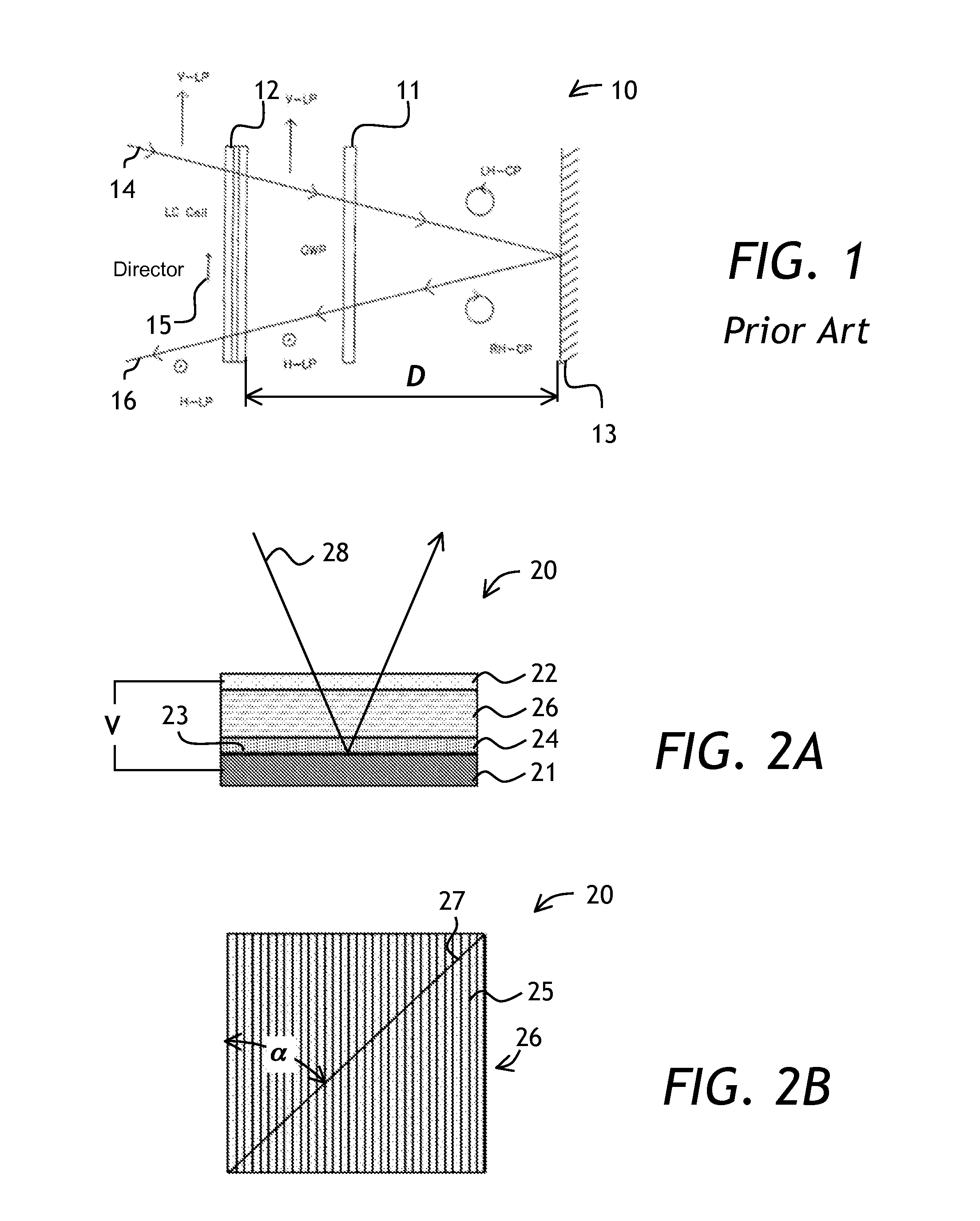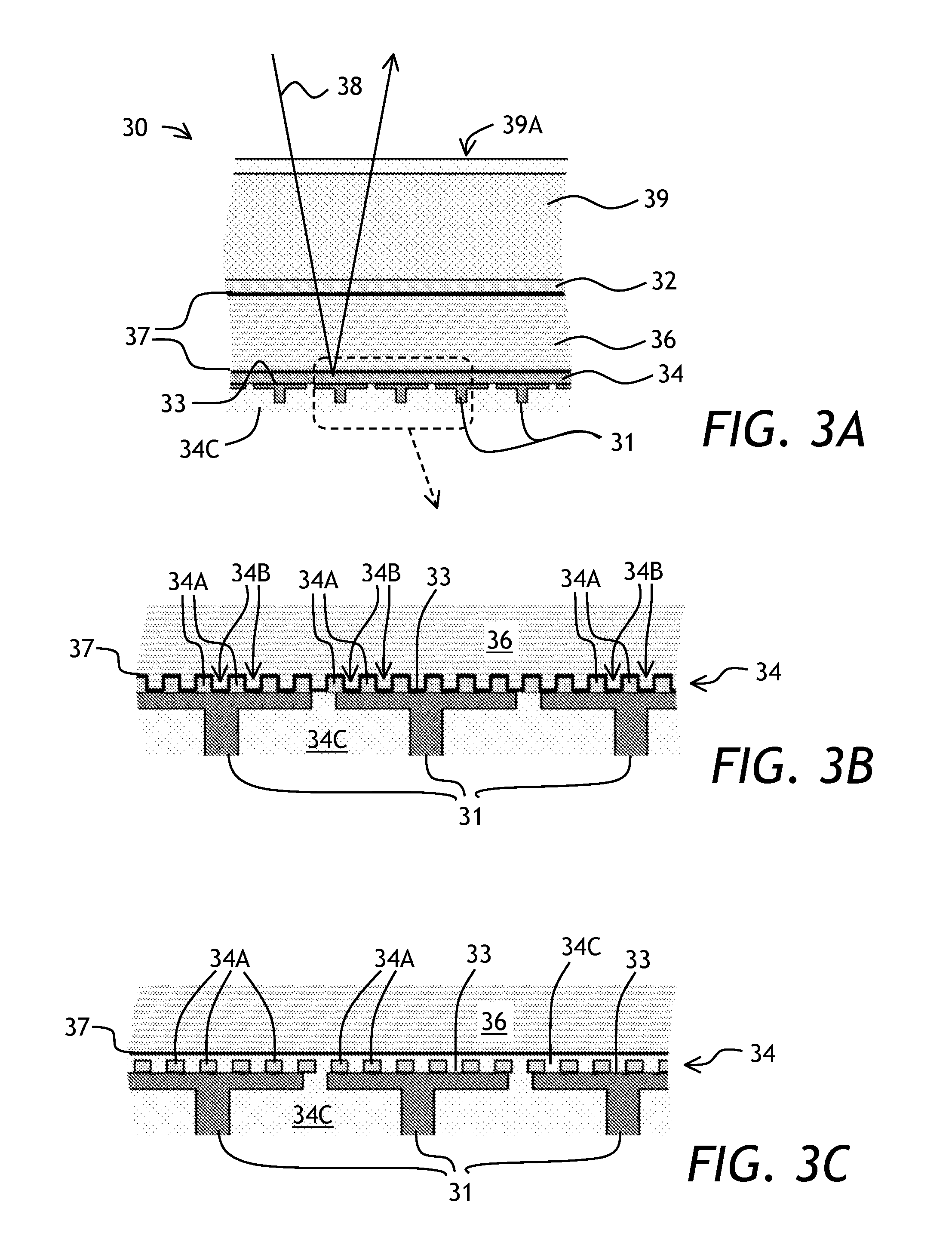Variable optical retarder
a retarder and variable technology, applied in the field of optical retarders, can solve the problems of reducing the spatial uniformity of the applied electric field, requiring a polarized optical beam for proper operation, and affecting the effect of the increased beam spot size, etc., to achieve the effect of reducing the optical loss and electric field fringing or shielding effect, facilitating the spatial uniformity of the varied optical retardation of the liquid crystal layer, and reducing the effect of optical loss
- Summary
- Abstract
- Description
- Claims
- Application Information
AI Technical Summary
Benefits of technology
Problems solved by technology
Method used
Image
Examples
Embodiment Construction
[0040]While the present teachings are described in conjunction with various embodiments and examples, it is not intended that the present teachings be limited to such embodiments. On the contrary, the present teachings encompass various alternatives, modifications and equivalents, as will be appreciated by those of skill in the art. In FIGS. 2A, 2B and 3A, 3B, and 3C, similar numerals refer to similar elements.
[0041]Referring to FIGS. 2A and 2B, a variable optical retarder 20 of the invention includes a first continuous flat electrode 21 and a second substantially transparent continuous flat electrode 22 opposed to the first electrode 21, a liquid crystal layer 26, and a sub-wavelength grating 24 disposed between the liquid crystal layer 26 and the first electrode 21. As seen in FIG. 2B, the sub-wavelength grating 24 has a plurality of grating lines 25 running parallel to each other. A director 27 of the liquid crystal layer 26 is at an angle a of 45 degrees with respect to the grat...
PUM
| Property | Measurement | Unit |
|---|---|---|
| acute angle | aaaaa | aaaaa |
| angle | aaaaa | aaaaa |
| acute angle | aaaaa | aaaaa |
Abstract
Description
Claims
Application Information
 Login to View More
Login to View More - R&D
- Intellectual Property
- Life Sciences
- Materials
- Tech Scout
- Unparalleled Data Quality
- Higher Quality Content
- 60% Fewer Hallucinations
Browse by: Latest US Patents, China's latest patents, Technical Efficacy Thesaurus, Application Domain, Technology Topic, Popular Technical Reports.
© 2025 PatSnap. All rights reserved.Legal|Privacy policy|Modern Slavery Act Transparency Statement|Sitemap|About US| Contact US: help@patsnap.com



